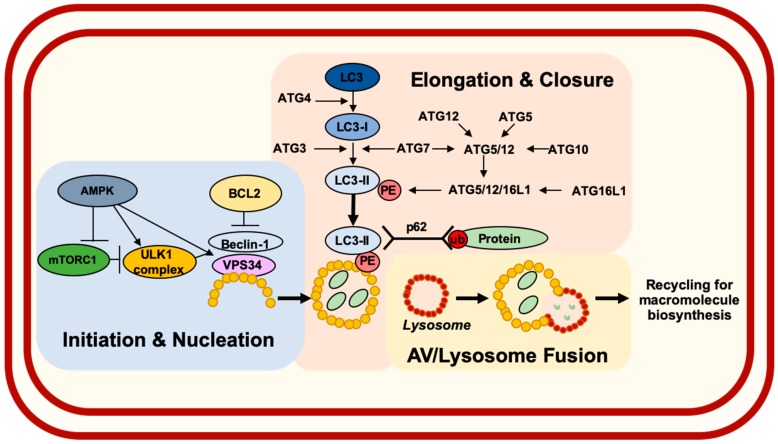Figure 1.
Molecular regulation of autophagy. Mammalian target of rapamycin 1 (mTORC1) acts a critical negative regulator of autophagy under nutrient-rich conditions. AMP-activated kinase (AMPK) serves a key positive regulator of autophagy in response to energy depletion. AMPK promotes AV initiation and nucleation through assembly of the Unc51-like kinase 1 (ULK1) complex. For nucleation to continue, Beclin-1 must dissociate from Bcl2 in order to interact with vacuolar sorting protein (VPS)34, a class III PI3 Kinase. AV elongation to surround p62/SQSTM1-associated cargo proteins involves cleavage of Microtubule-associated protein light chain 3 (LC3) by autophagy-related (ATG)4, generating LC3-I. LC3-I is then lipidated (generating LC3-II) through addition of phosphatidylethanolamine (PE) by two ubiquitin-like conjugation systems consisting of various ATGs. Following closure, AVs undergo fusion with lysosomes where acid hydrolase enzymes break down autophagic cargo so that their constituents can be used for biosynthesis of macromolecules.

